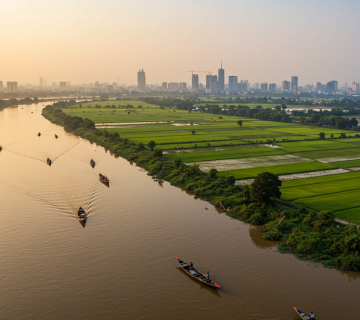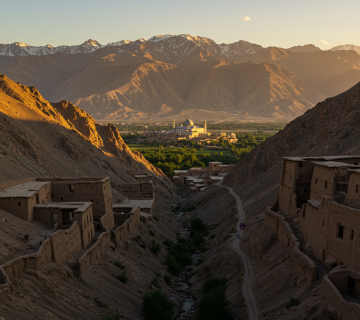Iraq – Crossroads of Civilizations: From the Cradle of the Tigris and Euphrates to Geopolitical Relevance
Introduction
Iraq’s geographical position has always played a pivotal role in shaping its history, politics, and economy. Situated in the heart of the Middle East between two historical power centers — Iran and the Levant — Iraq has long stood at the intersection of geopolitical, cultural, and economic interests.
Geographical Location
Covering an area of nearly 440,000 square kilometers in Western Asia, Iraq shares borders with six countries: Iran, Turkey, Syria, Jordan, Saudi Arabia, and Kuwait. The Tigris and Euphrates rivers flow from the north to the south of the country, forming a fertile alluvial plain that gave rise to the ancient civilizations of Sumer, Akkad, Babylon, and Assyria. Iraq’s terrain ranges from the mountainous north in Kurdistan to the arid deserts of the central and southern regions, offering considerable ecological and economic diversity.
Strategic Importance in the Region
Iraq functions as a bridge between the Gulf and the Levant, making it crucial not only for transportation and energy corridors but also for cultural and ethnic interconnection. It links Persian, Arab, Kurdish, and Turkmen cultures. The country’s geostrategic significance is heightened by the presence of military bases, oil pipelines, and key energy transit routes that pass through or originate from Iraqi soil.
Natural Resources and Energy Significance
With over 140 billion barrels of proven oil reserves, Iraq ranks as the second-largest oil exporter within OPEC. Major oil fields such as Kirkuk, Basra, and Rumaila are central to regional energy markets. This wealth gives Iraq considerable leverage in political and economic negotiations, despite internal instability.
Role in Regional Crises
From the Iran-Iraq War to the invasion of Kuwait and the subsequent U.S.-led military intervention, Iraq has often been at the center of regional turbulence. Since 2003, it has entered a new political phase marked by complex multi-actor involvement from Iran, the United States, Turkey, and Saudi Arabia. These overlapping influences have transformed Iraq from a passive actor to a multidimensional player in Middle Eastern politics.
Cultural and Civilizational Role
Home to major Shiite holy cities such as Karbala and Najaf, Iraq holds immense religious significance within the Islamic world. This has made religious tourism a key contributor to the national economy. Additionally, the presence of Kurdish culture in the north and Arab traditions in the central and southern parts of the country highlight Iraq’s rich cultural mosaic.
Contemporary Geopolitical Challenges
Despite its considerable potential, Iraq continues to grapple with foreign interference, border insecurity, ethnic tensions, and water scarcity. Its geostrategic location is both a blessing and a curse, requiring carefully balanced domestic and foreign policy to maintain sovereignty and national cohesion.
Conclusion
Today’s Iraq seeks to rebuild from the ruins of its past and secure a stable role in the region’s future. A nuanced understanding of Iraq’s geography and geopolitical function is essential for interpreting the evolving dynamics of the Middle East.





No comment